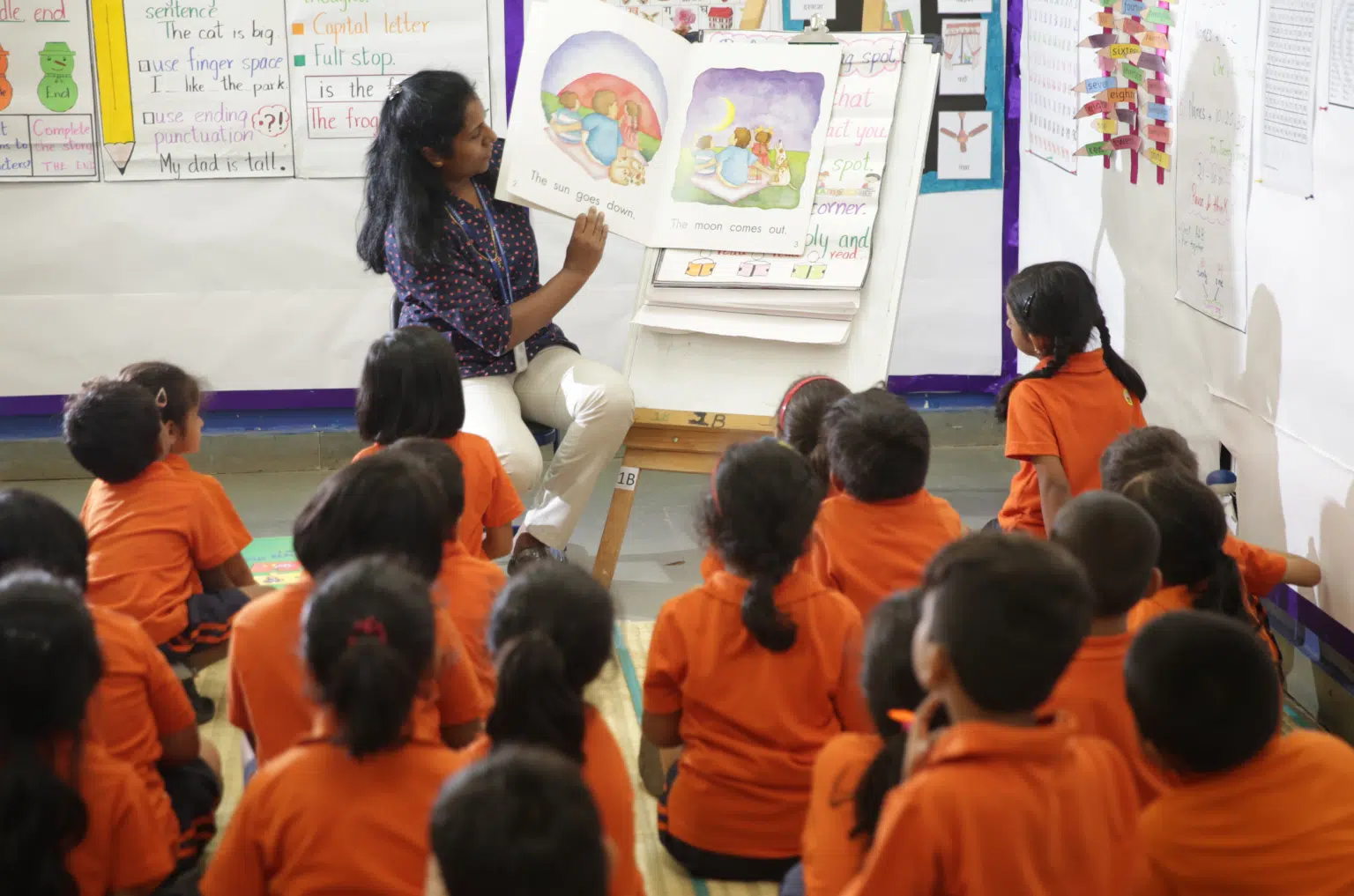In today’s fast-paced and interconnected world, teaching children to think independently, solve complex issues, and express original ideas is no longer a luxury; it’s a necessity. Traditional rote learning methods are no longer adequate to prepare students for the demands of the twenty-first century. Instead, the emphasis has switched to critical thinking and creativity in education, aided by the emergence of the global education system. International curricula, known for their emphasis on project-based learning, provide a framework for schools to foster creative thinking, inspire innovation, and help students thrive academically and personally.
Table of Contents
Toggle6 Ways International Curriculums Spark Thinking & Creativity
International curricula are specifically developed to encourage intellectual curiosity. They integrate project-based learning, STEAM education, and creative teaching approaches to help students reach their full potential. Here’s how they promote critical thinking and creativity in classrooms all over the world:
1. Open-ended questions and problem-solving tasks
Unlike traditional formats that rely on memorisation, international curricula stress open-ended questions that necessitate critical thinking and analysis. Students are encouraged to participate in problem-solving projects that have more than one correct answer, which helps them think differently and imaginatively. These tasks require students to establish unique viewpoints and justify their reasoning, laying the groundwork for future problem-solving in real-world circumstances.
2. Interdisciplinary subjects that connect ideas
A fundamental feature of international curricula is their cross-disciplinary approach. Subjects are interrelated, allowing students to comprehend the big picture. For example, a science project might combine math, writing, and digital arts to depict how the real world works. This project-based learning strategy improves creative thinking in schools and helps students make connections between seemingly unrelated topics, developing a well-rounded and imaginative attitude.
3. Research and reflection components
Research is a crucial component of many international programs, including the International Baccalaureate (IB) and Cambridge IGCSE, among others. Students are more than just passive users of knowledge; they actively participate in it by conducting research, presenting arguments, and reflecting on their learning experiences. This cycle of inquiry and introspection improves critical thinking and self-awareness. To enhance deeper comprehension, a variety of instruments are employed, including reflection journals, investigation logs, and personal learning reviews.
4. Emphasis on collaboration and presentation skills
Modern education emphasises not only individual intelligence but also the ability to collaborate. International curricula frequently feature group projects, debates, and presentations as part of their project-based learning activities. These activities promote communication, leadership, and interpersonal skills. Students learn to navigate multiple points of view, settle problems, and clearly articulate their ideas, preparing them for teamwork in academic and professional situations.
5. Creative freedom in arts, tech, and design
Creativity in international schools is not restricted to conventional arts; it includes technology, design, and entrepreneurship. STEAM education encourages students to investigate science and math using artistic mediums such as robots, 3D modelling, animation, and narrative. This integrative paradigm enables students to brainstorm, explore, and iterate, encouraging invention from a young age. Allowing kids to create without severe constraints increases their intrinsic motivation and ownership of the learning process.
6. Exposure to global perspectives and real-world issues
Another distinguishing feature of the global education system is its emphasis on global-mindedness. Students study topics such as sustainability, global citizenship, economic development, and human rights. These themes are frequently investigated through project-based learning, which addresses real-world problems. For example, kids could establish a climate change campaign or a waste management solution in their neighbourhood. This broadens their perspectives, increases empathy, and improves their ability to think critically about the world they live in.
7. The Impact on Student Confidence and Curiosity
International curricula have a significant impact on the development of confident, interested learners. When children are allowed to investigate concepts through project-based learning, question assumptions, and express themselves artistically, they develop a strong sense of self and purpose. This openness and encouragement to experiment frequently result in a passion for learning that continues beyond the classroom. Confidence arises not from having all the answers, but from understanding how to discover them, which is exactly what these curricula encourage.
How Does This Prepare Students for the Future?
In an ever-changing environment, kids want more than textbook knowledge. They demand qualities such as adaptability, emotional intelligence, and a growth attitude. International schools use new teaching approaches, such as STEAM education and project-based learning, to provide real-world learning experiences that help students develop important life skills.
Furthermore, institutions and organisations are increasingly seeking graduates who can collaborate, think critically, and solve complicated challenges. International students who develop these skills at a young age are better equipped to meet the tough demands of higher education and the workforce.
Conclusion
International curriculum challenges what it means to teach a child. They go beyond tests and grades, focusing on developing thinkers, innovators, and compassionate global citizens. Institutions like Inventure Academy are at the forefront of this movement, guaranteeing that learning is enjoyable, meaningful, and highly individualised. With extensive curriculum planners, inclusive surroundings, and a strong connection with parents, Inventure fosters a learning ecosystem in which children not only learn but also flourish. The emphasis on critical thinking, project-based learning, and creativity in education prepares students not only for tests but also for life.
Frequently Asked Questions
Which international curriculums focus on developing these skills?
Popular international curricula such as the International Baccalaureate (IB), Cambridge IGCSE, and American Advanced Placement (AP) emphasise critical thinking, project-based learning, and creative thinking in schools. These frameworks promote inquiry, interdisciplinary learning, and assessment based on application.
How do international curriculums promote creativity in students?
International curricula provide students with open-ended assignments, collaborative projects, and STEAM education modules that encourage hands-on experimentation and creative thinking. This enables students to investigate themes imaginatively and draw real-world connections across disciplines.
How is critical thinking assessed in international schools?
Reflective journals, research projects, oral presentations, and inquiry-based assignments are all used as assessment approaches. To assess critical thinking, international schools utilise rubrics that examine reasoning, problem-solving, and evidence-based conclusions, rather than tests.
Do international students perform better in university because of this approach?
Yes, many international students succeed in university settings because they have a good foundation in independent thinking, research abilities, and collaboration. Their experience with project-based learning, cross-disciplinary approaches, and creative teaching methods provides them with an advantage in higher education settings that prioritise active and engaged learners.



